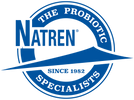In the world of probiotic supplements, not all are created equal – a fact that sadly requires a lot of consumer education to comprehend. Sometimes product labels aren’t entirely accurate, and in some cases, they are completely false. This is why it is so important to understand the nature of the supplements you are taking, to ensure that they are delivering the goodness that you expect.
One of the critical elements of probiotics is survivability – this is the ability for the probiotic bacteria specified on the label to make it alive, not only from the manufacturer to the consumer, but also through the hash acidic environment of the mouth and stomach so that it finally reaches its destination in the small or large intestines. If the bacteria can’t reach the intestines in large enough amounts, those supplements are simply ineffective.
To test this, a recent study from the Journal of Pharmacy and Nutrition Sciences set out to see how nine different probiotic supplement brands stacked up against each other when it came to surviving stress caused by the GI tract. The findings showed that several of the brands weren’t able to withstand distress – while others didn’t even contain the bacteria listed on the label.
The study tested nine different probiotic brands in an in-vitro process that helped determine how the supplements would fair. Each probiotic was examined for its bacterial composition compared to its label, the bacteria count compared to the label, and its ability to survive gastrointestinal stress.
The findings show significant variance between the composition portrayed on the label, and the true bacterial composition of the probiotic. In bacteria makeup, six of the nine contained the bacteria listed on the label, but three brands were missing the bacteria claimed. Two of the probiotics had L. bulgaricus listed on the label, but tests showed it was missing from the product. The third had L. acidophilus on the label with tests showing the bacteria strain missing.
Even if the bacteria listed were present in the probiotics, the bacteria count was often misleading from the label. After testing the nine brands, only two were representative of the bacteria count portrayed on the label. Of those two with accurate counts, one was included in the group that was missing bacteria listed on the label – leaving only one of the nine probiotics to be completely truthful in its labeling.
Following the tests on bacteria strains and count came the GI stress test. According to the report, the GI test showed a “a very high injury for almost all bacteria.” Basically meaning that even if the labeling was correct – even though most of them weren’t – that the bacteria might not even survive long enough to reach the intestine and benefit the host.
After seeing the accuracy of labeling and the treacherous journey to the large intestine, it’s easy to see that consumers should be extra careful in choosing which brand of probiotics to trust. There is a large probiotic industry selling to consumers, promising to provide benefits, but without proper verification and the ability to survive the GI tract – the consumer is being robbed.
At Natren, we ensure all of our probiotics undergo rigorous scientific testing to make certain the probiotics promised are the probiotics delivered. Because the FDA does not yet regulate the contents of probiotics, it’s the responsibility of each brand to ensure the consistency and accuracy of their products. Natren has been promoting compliance to voluntary, internationally recognized standards, such as those created by the Swiss Pharmaceutical Inspection Convention and Pharmaceutical Inspection Co-operation Scheme (jointly referred to as PIC/S) and audited by Australia’s rigorous Therapeutic Goods Administration (TGA), and also by relentlessly calling out these studies and educating the public on the need for verifiable, high quality probiotics. We hope that this continued education process will help drive out the impostors and shady products from the market through consumer awareness and pressure for a more regulated marketplace.
The post Probiotic Stability & Survivability appeared first on Natren Probiotics Blog.




0 comments